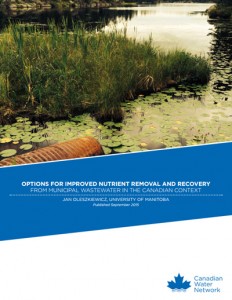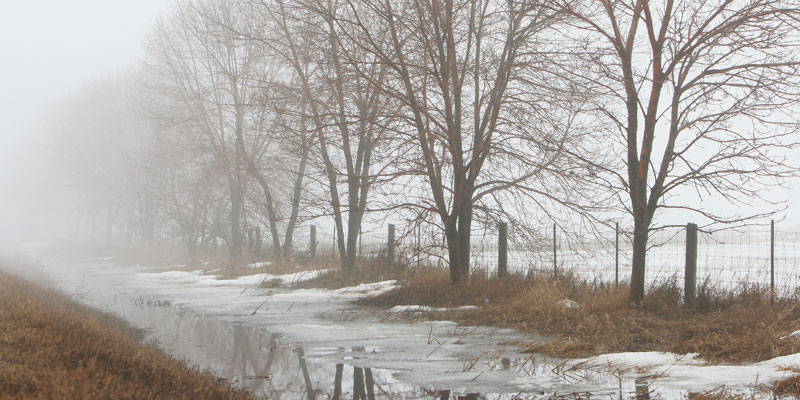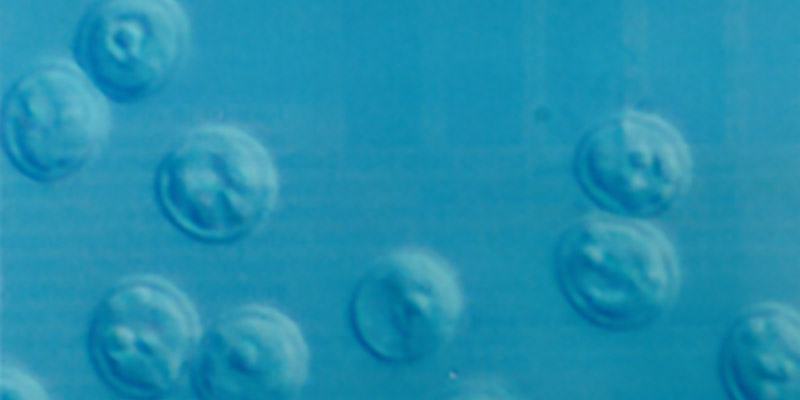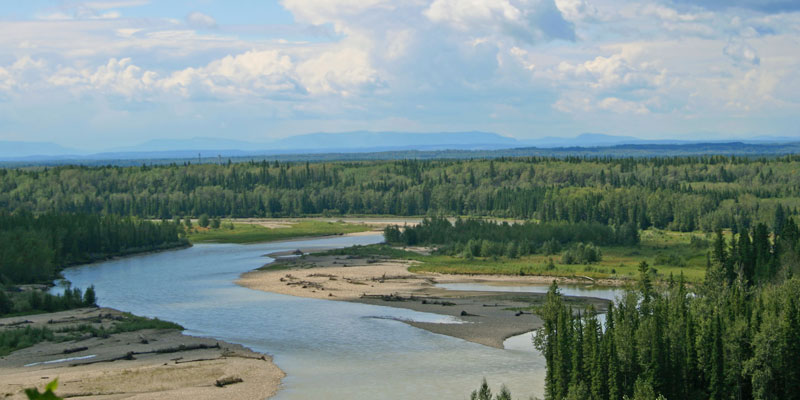Options for Improved Nutrient Removal and Recovery from Municipal Wastewater in the Canadian Context
Principal Investigator - Jan Oleszkiewicz, Distinguished Professor, University of Manitoba (2013-2014)

Challenge
Eutrophication can cause excessive algal blooms which can present significant problems for both environmental and human health. In an effort to limit these impacts, biological nutrient removal (BNR) is used to remove biological nitrogen and phosphorous from municipal waste water before it is discharged into surface or groundwater. This process aids in limiting nutrient concentration which can lead to negative environmental and human impacts.
However, nutrient removal is not without challenges as there are multiple BNR processes which come with different nutrient fates and effluent concentration. BNR challenges in Canada include: 1) significant variation in provincial environmental regulation, 2) broad ranges of water temperature that affect BNR systems in numerous ways, 3) sparsely populated areas of Canada, which face challenges in respect to remoteness, accessibility, supplies, and availability of skilled operators, 4) significant variation in soil and groundwater quality, which has implications on policy, and 5) a need for advancement in BNR technologies. Developing means to overcome these challenges is essential in decision making processes for multiple end-users, including owners, operators, designers, and legislators.
The project team, led by Dr. Jan Oleszkiewicz, investigated these unique challenges of nutrient removal and recovery from Canadian municipal wastewater treatment plants by reviewing existing treatment processes and methods to improve nutrient removal and recovery, lower emissions, and explore cost competitive approaches.
Project
This project developed recommendations regarding nutrient removal, recovery and reuse via the synthesis of knowledge and practice by: 1) creating a comprehensive report on the state of nutrient removal and recovery research and practice, both in Canada and internationally; and 2) designing a national consultation workshop and online dialogue forum.
The comprehensive report is a synthesis of both a literature review and the results of a stakeholder survey. The review is an analysis of the available academic, technical, trade, and ‘grey’ literature on nutrient removal and recovery and will help characterize drivers of the wastewater treatment industry such as policies, climate, and existing infrastructure. The national and international survey was conducted as both a web-based and phone survey. Web-based surveys were distributed to over 200 municipalities, water authorities, and regulators. Phone surveys targeted consulting engineers, academics and technology manufacturers. The survey was intended to enhance the findings of the literature review through access to unpublished information, knowledge, and experience.
The results uncovered in the comprehensive report will act as key guidelines in preparing a national consultation workshop and online dialogue. The workshop and the forum allowed for better dissemination of the knowledge generated by the project. Additionally, the workshop and forum providef a background for the constructive discussion about the future direction of nutrient removal and recovery in Canada.
Outputs
Anticipated outputs include:
- National consultation workshop, where discussions will lay the foundations for regulatory changes
- A comprehensive report on the state of nutrient removal and recovery research and practice, both in Canada and internationally
- A comprehensive list of existing, planned, and under-design BNR treatment systems in Canada.
- Identification of cost-effective process upgrades to achieve nutrient removal and/or recovery at Canadian wastewater treatment plants.
- Development of a list of technological research needs and uncertainties from a Canadian perspective.
- Development of key questions and components for a national consultation workshop encompassing regulators, technology and service providers, municipalities, and planners.
Outcomes
Anticipated outcomes included:
- Changes in regulations in an effort to move the municipal wastewater treatment paradigm towards energy-efficiency, and nutrient recovery.
- Increased knowledge for water managers, regulators, industry representatives and government partners. Canadian regulators will benefit immensely from a review of Canadian and international regulations and identification of regulatory and economic drivers of nutrient removal and recovery.
- Informed investment decisions for partners in relation to process upgrades.






